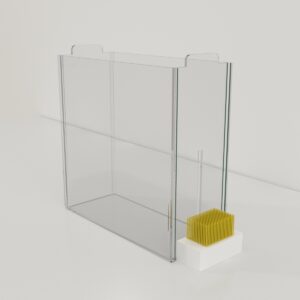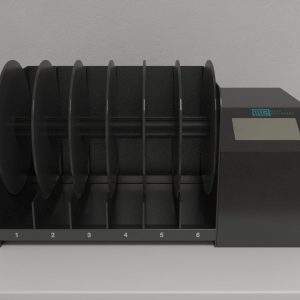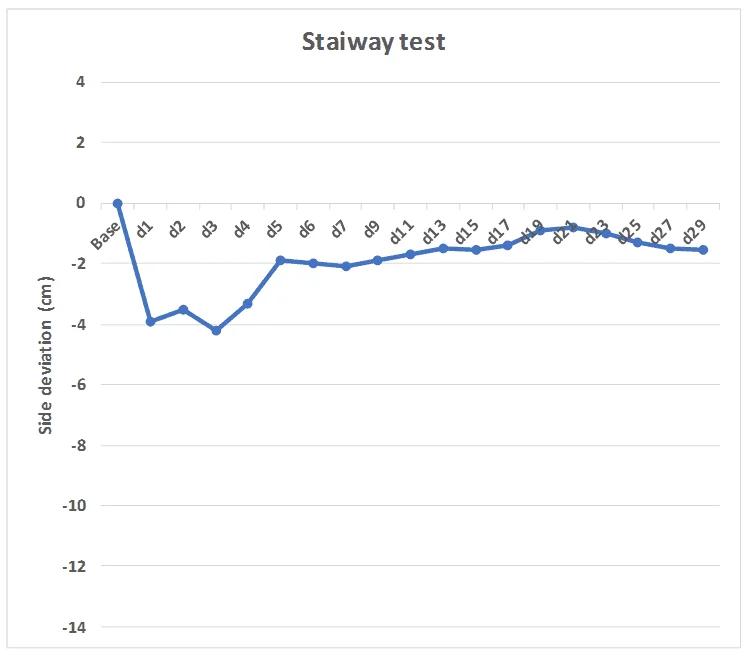$1,890.00 – $1,990.00Price range: $1,890.00 through $1,990.00
The Stairway Test Apparatus originally described in the literature for MCAO stroke models in rats by Boltze et al (2006) in Germany. It is a robust, cost-effective, and highly reproducible, test system for evaluating motor lesions. multiple ladder rungs lead to a home cage environment. It requires little pretraining and is a more sensitive test for subtle perturbations in motor function.

MazeEngineers empowers preclinical neuroscience research with meticulously designed, customizable behavioral apparatuses. From manual classic mazes to fully automated smart systems, we provide the tools scientists need to capture high-quality, reproducible data for studies on learning, memory, anxiety, and depression.



Mouse |
Rungs |
28 rungs total |
2.5 cm diameter; spaced evenly every 1.5 cm. |
Base of the triangle is 60 cm wide |
Length on both sides: 70cm |
Rat |
Rungs |
42 rungs total |
4 cm diameter; spaced evenly every 2 cm. |
Base of the triangle is 90 cm wide |
Length on both sides: 100cm |

The Stairway test, introduced by Boltze et al. in 2006, was designed to assess sensorimotor deficits in rats following a stroke. This innovative apparatus requires only brief training sessions of 10-15 minutes and yields highly reproducible results. It evaluates both motor and sensory functions by having the subject climb a vertically oriented triangular ladder. The ladder’s design ensures that the home cage at the top is not visible to the subject, requiring them to learn its location through initial trials without visual cues.
Similar behavioral assessments to the Stairway test include the Tilt Ladder, Horizontal Ladder, Balance Beam, and Rotarod. While many of these tasks use the fear of falling as motivation, the Stairway test’s primary motivator is the placement of the home cage at the top of the ladder. Since the ladder is nearly vertical and the home cage is out of sight, the subject must learn its position through trial and error. Unlike the Rotarod, which is a dynamic apparatus, the Stairway test is static.
The Stairway apparatus features a vertically mounted triangular ladder, with the apex of the triangle serving as the base. The ladder stands 100 cm tall, with the widest rung measuring 90 cm in width. Each rung has a diameter of 0.4 cm and is spaced 2 cm apart, totaling 42 rungs. The apparatus is typically set at an inclination of 80 to 90 degrees relative to the ground, ensuring that during the experiment, the subject can only see the sides and the ceiling of the setup.
The Stairway apparatus is thoroughly cleaned both before and after each experiment to ensure optimal conditions. It is well-illuminated to facilitate clear observation. Automated tracking and recording systems, such as Noldus Ethovision XT, can be utilized for accurate data collection and scoring.
During the experiment, the subject is positioned at the apex of the ladder’s first 20 cm. The home cage at the top of the ladder serves as the primary motivation for the subject to ascend. The starting point provides a clear path to the home cage, but subjects with impairments often stray from this direct route. Each daily session comprises five trials, each lasting approximately 10 seconds. Subjects are maintained under consistent temperature conditions with unrestricted access to food and water.
To evaluate the effects of human umbilical cord blood cell (HUCBC) transplantation on motor performance, an artificial stroke is induced in subjects via middle cerebral artery occlusion (MCAO). Subjects are randomly assigned to receive either HUCBC cell therapy or a phosphate-buffered saline (PBS) injection 24 hours post-stroke. Baseline measurements are taken one day before the procedure. Subjects are tested daily for the first 7 days and then every other day for a total of 29 days (Boltze et al., 2006).
The Stairway test assesses how far the subject deviates from the central axis of the ladder. Deviations can range up to 45 cm on either side of this central point, which is designated as zero. Deviations to the left are recorded as a maximum of -45 cm, while deviations to the right are recorded as +45 cm. The data from each daily session is the average of five trials.
The following sample graph depicts the deviation of the HUCBT treated subjects from the central point on the Stairway test.

The Stairway test has proven to be highly effective when compared to the Rotarod and the modified neurological severity score (mNSS) evaluated using a balance beam. While the Rotarod is commonly used for assessing motor deficits, it is often costly and time-intensive, typically requiring around 14 days of conditioning. In contrast, the Stairway test offers a more affordable and efficient alternative, necessitating only a brief training period of approximately 10-15 minutes.
Unlike other motor deficit assessments, the Stairway test evaluates both motor and sensory functions. It provides a detailed reflection of therapeutic effects, offering a comprehensive view of motor deficits. Unlike the Horizontal Ladder test, which lacks a gravity component, the Stairway test incorporates gravitational effects, enhancing the understanding of overall motor impairments. Additionally, it can assess unilateral impairments in rodents, as evidenced by deviations from the direct route to the home cage. The primary motivation in the Stairway test is the home cage, which drives the subject’s behavior throughout the assessment.
Repeated trials on the Stairway will cause muscle fatigue in the subjects. The subject’s performance may also be dependent on its weight. Thus, it is important to have a large cohort of similar weights to obtain reliable results. It is important to allow rest periods between each trial. Factors such as the age and sex can also affect the performance. Subject’s own emotional and mental status can also influence the results. Improper placement of the subject on the rungs can also lead to erroneous results.
Boltze J, Kowalski I, Förschler A, Schmidt U, Wagner D, Lobsien D, Emmrich J, Egger D, Kamprad M, Blunk J, Emmrich F (2006). The stairway: a novel behavioral test detecting sensomotoric stroke deficits in rats. Artif Organs. 30(10):756-63.
| Color | Black, Blue, White |
|---|---|
| Species | Mouse, Rat |
There are no questions yet. Be the first to ask a question about this product.